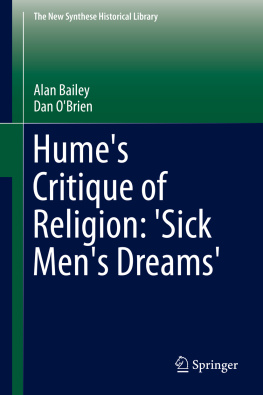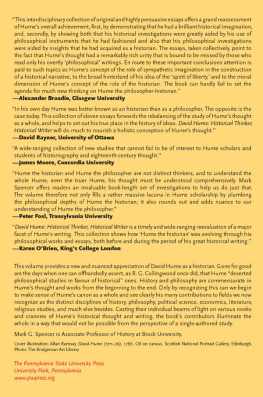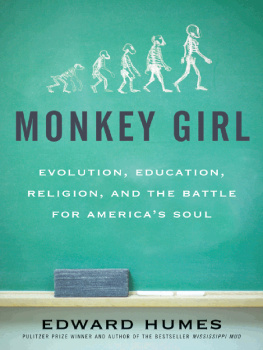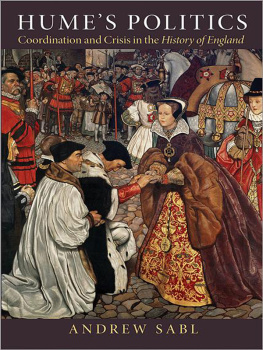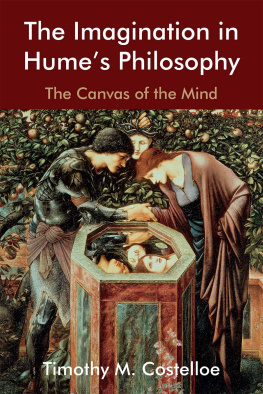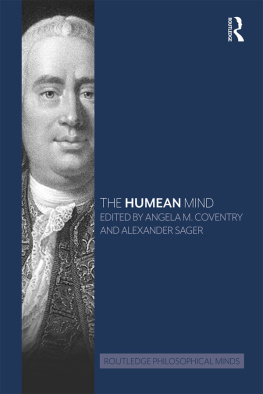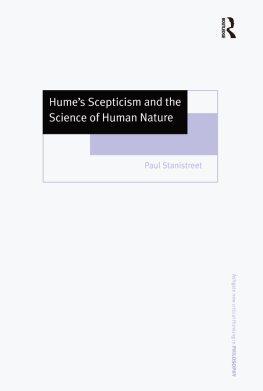1. Hume the Infidel
1.1 Humes Eighteenth-Century Reputation
When David Hume died in Edinburgh in 1776, his reputation as one of the leading British critics of Christianity and all forms of religion was sufficiently firmly established in the popular mind that many people in the city expected his funeral to be the occasion for either some form of public disorder or, even more extravagantly, a miraculous sign of Gods displeasure at the life led by so unrepentant and prosperous an infidel. According to Samuel Jackson Pratt:
notwithstanding a heavy rain, which fell during the interment, multitudes of all ranks gazed at the funeral procession, as if they had expected the hearse to have been consumed in livid flames, or encircled with a ray of glory. (, 312)
He reports too that the grave-diggers, digging with pick-axes Mr. Humes grave attracted the gaping curiosity of the multitude, and says that even people in a sphere much above the rabble sent to the sexton for the keys of the burying-ground, and paid him to have access to visit the grave (ibid.).
The level of public interest in Humes death and burial led to his brother, John Home of Ninewells, becoming worried about the safety of Humes body. Pratt tells us that:
on a Sunday evening (the gates of the burying-ground being opened for another funeral) the company, from a public walk in the neighbourhood, flocked in such crowds to Mr. Humes grave, that his brother actually became apprehensive upon the unusual concourse, and ordered the grave to be railed in with all expedition. (ibid.)
And as an additional precaution against any unauthorised disinterment, armed guards were posted to watch over Humes grave for a period of some eight nights, and candles in a lanthorn were placed upon the grave, where they burned all night (ibid., 31213).
The view that Hume was no friend of Christianity or religious belief can readily be traced back to the initial publication of the first two books of the Treatise of Human Nature in 1739. According to Mossner ( but what is entirely plain is that this particular eighteenth-century reviewer was convinced that the Treatise had the aim of calling into question and potentially subverting orthodox religious beliefs.
Other early notices and reviews of the Treatise seem to have concentrated primarily on Humes epistemological scepticism and his analysis of causation (see Mossner , 11933). However, this should not be interpreted as showing that the initial readers of the Treatise generally regarded it as sound on matters of religion. When Humes name was put forward in 1744 as a candidate for the Chair of Ethics and Pneumatical Philosophy at Edinburgh University, it was the Treatise that provided Humes opponents with ammunition to use against him.
Hume (, I, 578) mentions in a letter to William Mure of Caldwell dated 4 August 1744 that the accusation of Heresy, Deism, Scepticism, Atheism &c &c &c. was started against me, but at that point he seems to have rather complacently assumed that it had failed to damage his candidacy in consequence of its being bore down by the contrary Authority of all the good Company in Town. A year or so later, Hume was forced to acknowledge in a letter to another friend and drinking partner that he had underestimated the damage that these charges had inflicted upon his prospects.
I am informd, that such a popular Clamour has been raisd against me in Edinburgh, on account of Scepticism, Heterodoxy & other hard Names, which confound the ignorant, that my Friends find some Difficulty, in working out the Point of my Professorship, which once appeard so easy. (, I, 59)
Much of the problem seems to have been caused by a polemical pamphlet, or possibly pamphlets, circulating in Edinburgh at this time. At the urging of some of his friends, Hume wrote a brief response to one such critical pamphlet, and this was published anonymously in 1745 as A Letter from a Gentleman to His Friend in Edinburgh. It is clear from the content of Humes own pamphlet that the work to which he is replying is one that made use of quotations from the Treatise in order to attack the religious orthodoxy of its author. In the second paragraph, Hume presents his decision to write a reply as arising from the following considerations.
I was perswaded that the Clamour of Scepticism, Atheism, &c. had been so often employd by the worst of Men against the best, that it had now lost all its Influence; and should never have thought of making any remarks on these maimd Excerpts , if you had not laid your Commands on me, as a Piece of common Justice to the Author, and for undeceiving some well-meaning People, on whom it seems the enormous Charge has made Impression. (, 1)
Unfortunately for Hume, his attempted rebuttal of the charges against him seems to have had little effect, and on 5 June 1745 the Town Council elected William Cleghorn to the vacant chair.
Hume would make only one other attempt to secure a university appointment. In 1751 Hume allowed his friends to put him forward for the post of Professor of Logic at Glasgow University. Once again his alleged enmity towards religion in general, and Christianity in particular, proved a major stumbling block. In a letter to John Clephane, Hume placed the blame for this second academic misadventure squarely on the shoulders of the clergy and the Duke of Argyll.
You have probably heard that my friends in Glasgow, contrary to my opinion and advice, undertook to get me elected into that College; and they had succeeded, in spite of the violent and solemn remonstrances of the clergy, if the Duke of Argyle had had courage to give me the least countenance. (, I, 164)
By this point in Humes career the Treatise had been overtaken as a source of clerical disapproval by subsequent publications. The contents of the first edition of Humes Essays were generally seen as innocuous and helped to push forward his reputation as an elegant writer and subtle thinker. However the Philosophical Essays concerning Human Understanding ,, 5) that Answers, by Reverends and Right Reverends, came out two or three in a Year.
In 1754 Humes literary fame and public notoriety took another upwards turn with the publication of the first volume of what was then called The History of Great Britain but later became The History of England. This dealt with the reigns of James I and Charles I, a period that was seen by Humes contemporaries as playing a crucial part in the genesis of the political settlement under which Britain was governed in their own time. Consequently, Humes erudite attempt at writing a genuinely non-partisan history of the events of this highly charged era attracted considerable attention, albeit mainly at first in the form of objections from authors who thought that Hume had been unduly favourable to the constitutional positions and sentiments of their political opponents. It was also criticized for the inclusion of what many readers took to be attacks on the social role of religious beliefs. Humes own assessment of its initial reception was as follows:

